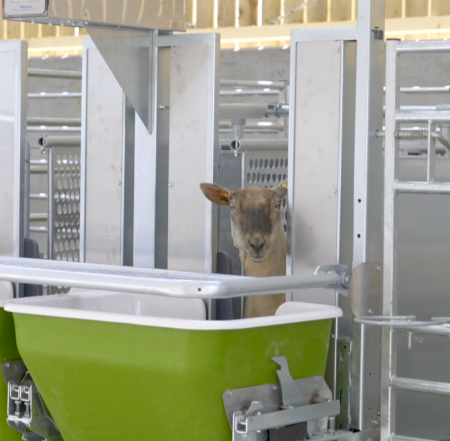CIEL | Case Study: Improving the carbon footprint of sheep farming
Genetics | Reproduction | Behaviour | Nutrition | Health & Welfare | Productivity | Food Integrity | Environmental Impact
The Challenge
Sheep farming is a widespread industry in the UK with 34.3 million sheep being recorded in the most recent agricultural census (2019). It can be used in many ways to benefit the environment and the opportunity to decrease the carbon footprint of producing lamb would play a key role in reducing agriculture’s overall contribution to net greenhouse gases.
The Action
Individual feed conversion trials with Exlana sheep at the Robert Orr Small Ruminant Facility, located on the Rothamsted Research North Wyke Farm Platform, aim to identify any genetics that will allow a more feed-efficient sheep with a reduced carbon footprint to be produced. The trials, sponsored by Mole Valley Farmers and using research capability co-funded by CIEL, will help identify trait leaders for feed conversion to be used in future breeding programmes. Exlana sheep are a composite maternal breed. Use of genetically superior feed efficient livestock is proven to be cost-effective, cumulative and sustainable throughout the livestock industry, but is relatively unrecorded in the sheep sector.
The Impact
The future of UK lamb production lies in efficient forage conversion, low labour and reduced chemical inputs. The project will help to improve sheep genetics for feed efficiency and improve the long-term sustainability of meat production from forage.
“ This is a great example of how industry is actively supporting innovation in the sector to help the journey towards net zero farming. I’m pleased the research is made possible through the unique capability of this facility which CIEL has supported through funding from Innovate UK. ” Lyndsay Chapman, CEO, CIEL
This project is funded through ERDF-sponsored Environmental Futures & Big Data Impact Lab.








